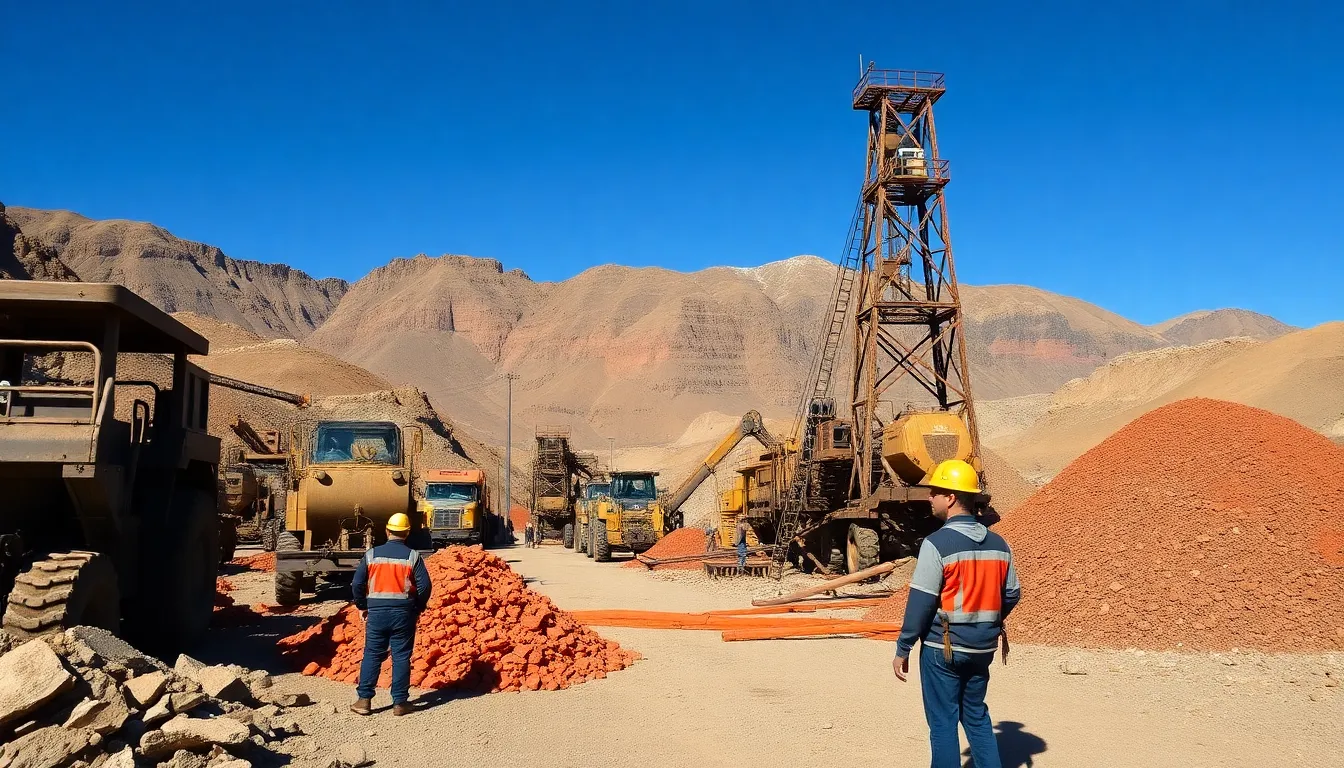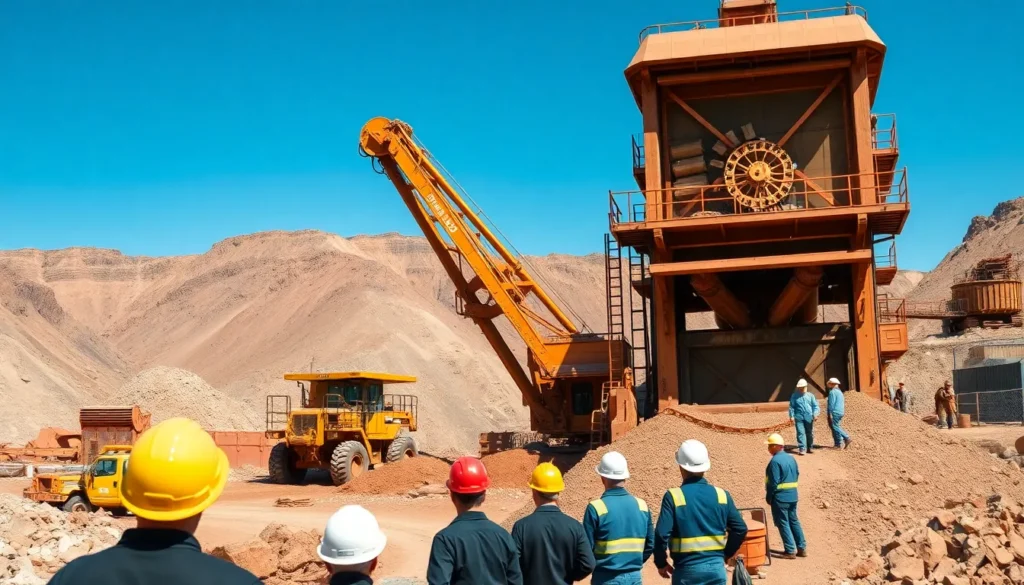Table of Contents
ToggleCopper’s not just a pretty face in the world of metals; it’s the shiny superstar of the commodities market. As the demand for electric vehicles and renewable energy skyrockets, everyone’s asking: what’s next for copper prices? Spoiler alert: it’s not just a wild guess; it’s a rollercoaster ride of predictions that could leave investors grinning or grimacing.
With experts crunching numbers and analyzing trends, the future of copper looks like a thrilling game of “guess who.” Will it soar to new heights or take a nosedive? Buckle up as we dive into the factors influencing copper prices and what the crystal ball might reveal. Whether you’re a seasoned investor or just curious about this metal’s fate, you won’t want to miss the insights that could shape your financial future.
Future Copper Price Predictions
Future prices for copper exhibit various trajectories influenced by numerous factors. Demand from industries like electric vehicles and renewable energy plays a critical role. Analysts expect strong price support due to these sectors. Supply constraints can also impact pricing, particularly if mining output faces interruptions.
Market trends indicate fluctuating demands based on global economic conditions. For instance, increased investment in green technologies may drive up prices over the next decade. Historical data shows periods of volatility, underscoring the need for cautious forecasting.
Economic indicators further inform price predictions. Investors often reference reports from the International Copper Study Group (ICSG) that provide insights into production and consumption trends. Predictions suggest that a tight global supply amid rising demand could elevate prices significantly.
Copper prices also respond to geopolitical events that affect trade relations. Uncertainties, such as tariffs or supply chain disruptions, may lead to unexpected price surges. Experts recommend monitoring these dynamics to gauge potential impacts on copper valuations.
Sustainability efforts could reinforce the demand for copper, making predictions even more complex. As countries commit to reducing carbon emissions, the push for electrification will likely persist, creating upward pressure on prices. Therefore, continuous analysis of market signals and global strategies becomes crucial for accurate predictions.
Investors should remain aware of the potential for price fluctuations. The interplay between demand growth, supply stability, and external economic factors will determine the future landscape for copper prices. Keeping a close eye on key indicators will help in navigating the uncertain terrain.
Factors Influencing Copper Prices

Copper prices fluctuate due to several critical influences that shape market dynamics.
Supply and Demand Dynamics
Supply and demand play a significant role in determining copper prices. Increased demand from industries such as electric vehicles and renewable energy drives prices higher. In contrast, supply constraints from mining disruptions or geopolitical tensions can restrict availability, putting upward pressure on prices. Seasonal trends also affect demand, with construction and electrical markets often increasing activity in warmer months. Reports from the International Copper Study Group confirm that a tight supply may persist as consumption grows. Market analysts expect these trends to create volatility in the copper market, emphasizing the need for careful monitoring of both supply and demand shifts.
Global Economic Trends
Global economic conditions influence copper pricing substantially. Economic growth in major markets like China and the United States boosts demand for copper in various sectors, including construction and manufacturing. Inflation rates and currency fluctuations can also impact prices, as a stronger dollar typically results in lower commodity prices. Trade policies and international relations further modify market conditions, affecting the flow of copper on a global scale. Reports indicate that green technology investments in developing economies may drive additional demand, elevating copper’s value in future markets. Economic indicators remain vital for predicting these trends and understanding their potential effects on future copper pricing.
Historical Price Trends of Copper
Copper has experienced significant price movements throughout its history, influenced by various global factors and demand shifts.
Key Milestones and Events
Notable milestones shaped copper pricing. The 2000s witnessed strong demand due to rapid industrialization in China, which contributed to price surges. In 2008, the global financial crisis caused a sharp drop in prices, reflecting reduced consumption. Recovery began around 2010 as economies stabilized, pushing prices higher again. The advanced push towards renewable energy technologies since 2015 highlighted copper’s importance, further driving demand and prices upward. Additionally, supply disruptions from natural disasters and geopolitical tensions have repeatedly influenced market stability.
Price Fluctuations Over the Years
Copper prices have faced substantial fluctuations over the years. In the 1990s, prices averaged about $1.00 per pound, but significant increases occurred in the 2000s, reaching highs of approximately $4.50 by 2011. The market saw a decline to around $2.00 per pound during the 2015 downturn. Recovery during the late 2010s reversed this trend, with prices climbing past $3.00 per pound amid rising demand for green technologies and electric vehicles. The volatility observed in copper pricing reflects broader economic shifts and significant market factors impacting its valuation.
Expert Insights and Forecasts
Analysts emphasize the intricate dynamics shaping copper prices. Experts note strong demand from sectors like electric vehicles and renewable energy creates upward pressure. Supply disruptions further complicate the landscape, as geopolitical tensions can hinder production flow. Industry specialists often highlight how increased investments in green technologies will continue driving demand.
Analysis from Industry Specialists
Industry specialists provide valuable perspectives on future copper prices. They observe that ongoing developments in green energy initiatives will significantly impact demand through the next decade. Continuous shifts in global market conditions remain critical for understanding price fluctuations. Forecasts suggest that unless supply constraints ease, prices could rise considerably. Insights from reports underscore that strategic investments into mining operations may also influence future market stability.
Projections Based on Current Data
Current data indicates that copper prices are likely to trend higher in the coming years. Market reports reveal a potential increase fueled by growing demand from infrastructure projects worldwide. Analysts emphasize the historical volatility of copper, pointing to past trends as indicators of future behavior. Projections based on recent trade policies suggest that shifts in the global economy could impact pricing in unpredictable ways. Overall, the balance between supply and demand will dictate the trajectory of copper prices moving forward.
Investment Considerations
Investing in copper entails navigating various risks and opportunities. Investors observe that fluctuating prices influenced by global demand can yield significant returns, especially during bullish market conditions. Geopolitical tensions or supply chain disruptions might threaten availability while simultaneously inflating prices. Opportunities arise from increasing investments in green technologies, indicating a sustained demand surge. Stakeholders should weigh these factors carefully, as the drive towards renewable energy and electric vehicles presents a unique opportunity for growth.
Long-term investments in copper often align with broader economic trends. While potential volatility exists, those looking at copper as a commodity over time might benefit from appreciation amidst rising demand. Investors can expect steady growth, especially given the anticipated uptick in infrastructure projects globally. Short-term trades, however, require a keen eye on market fluctuations. Seasonality, economic indicators, and geopolitical events can sway prices rapidly, allowing nimble traders to capitalize on timely shifts. Therefore, a balanced approach that considers both long-term stability and short-term opportunities is advisable.
The future of copper prices remains a complex interplay of demand and supply dynamics. As industries increasingly turn to electric vehicles and renewable energy, the pressure on copper prices is likely to intensify. Investors must stay alert to the evolving landscape shaped by geopolitical tensions and economic indicators.
While long-term trends suggest upward momentum for copper, short-term fluctuations can be unpredictable. A well-informed investment strategy that balances both risks and opportunities will be essential. Keeping an eye on market signals and industry developments will equip investors to navigate this volatile yet promising market effectively. Understanding these factors will be crucial for those looking to capitalize on the potential growth of copper in the coming years.








